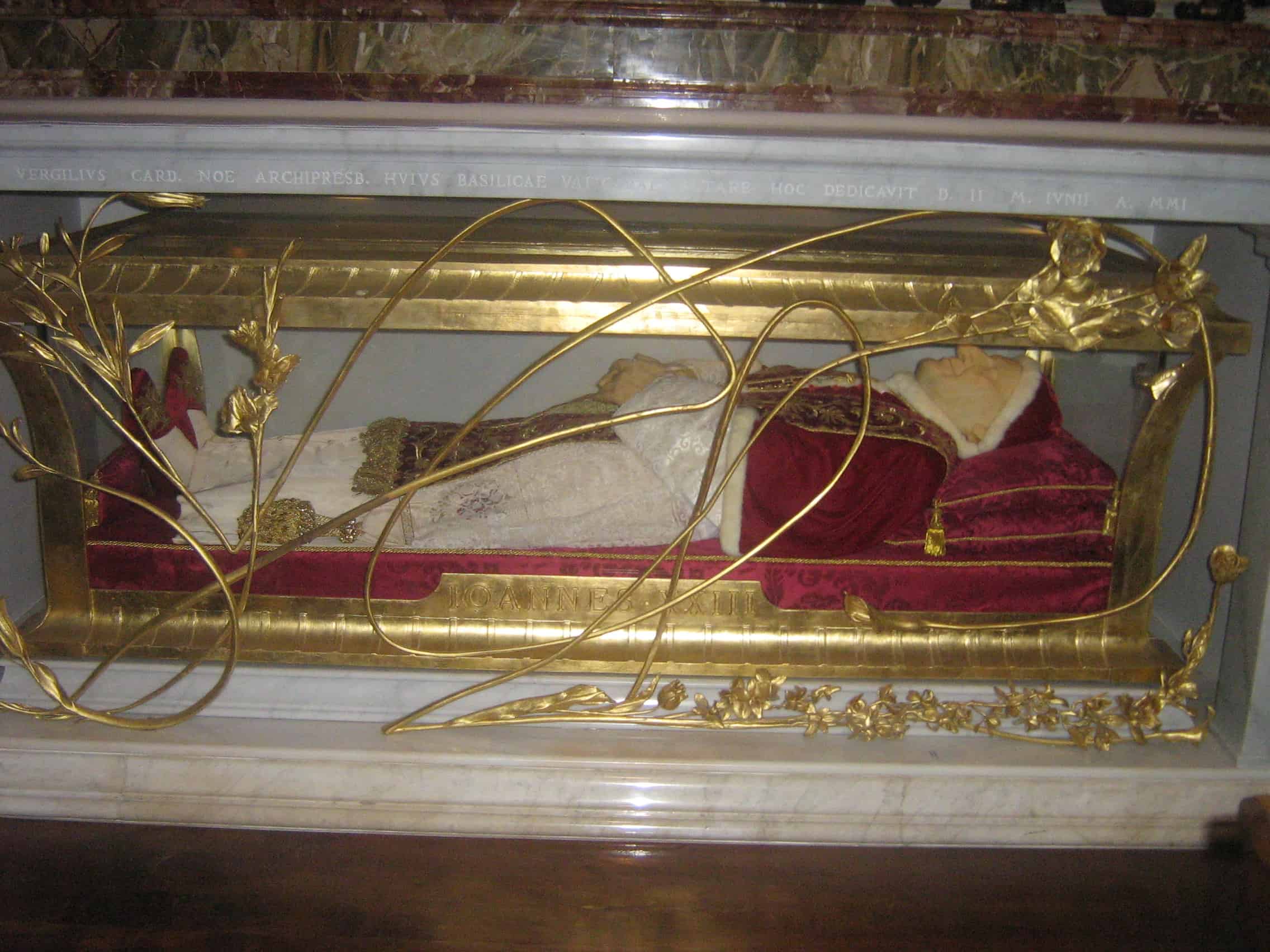Pope John XXIII — 1881 to 2,597 weeks ago Monday
A Pope is like a box of chocolates … you never know what you’re going to get. This was never more true than with Papa Roncalli as the gregarious Angelo was known. A peasant and the third-born of thirteen, he was famed for his ardent and scrupulous quest for personal holiness. Famously informal and witty, he sure didn’t have scruples about much else. Once asked, “How many people work in the Vatican?” he replied, “About half.” Two of his encyclical letters were praised by many around the world — Pacem in Terris calling for “universal peace and intensified international cooperation and Mater et Magistra demanding international “aid to underdeveloped countries.” But his most unexpected move was to call the Second Vatican Council. In doing so, this ‘caretaker pope’ — elected at 76 presumably to hold the office till the next papabile came of age — likely leaves behind the greatest legacy of any 20th century pope.
Pope Paul VI — 1897 to 1,805 weeks ago Sunday
The church still feels the changes wrought by Giovanni Battista Enrico Antonio Maria Montini, elected in the middle of Vatican II and responsible for bringing it to completion. Condemning birth control and women’s ordination with a pair of encyclicals, he also moved the mass into the vernacular, enacted respectful and cordial relationships with Judaism and established the Synod of Bishops. He set the precedent that the Pope was expected to travel the world to visit the faithful. He leaves behind this shape of the post-Vatican II church.
Pope John Paul I — 1912 to 1,798 weeks ago Thursday
Albino Luciani was not pope very long. “Il Papa del Sorriso” (The Smiling Pope) took his grin to the grave after just 33 days as pontiff. But in that short time he dressed down the papacy in ways that still endure. He ditched the ‘royal we’ and started talking in the first-person singular. He tried and failed to do the same to the sedia gestatoria, that ornate throne carried by the Swiss Guard. He succeeded in dispensing with the papal coronation. He leaves behind the comparatively informal papacy we take for granted today.
Pope John Paul II — 1920 to 414 weeks ago Saturday
A sharp youngest child in a family of modest means, Karol Jozef Wojtyla was the goaltender of his youth soccer team and an inveterate performer — a lead actor with a rich baritone. At 44, he became archbishop of Krakow. He’d be pope a decade and a half later, the first non-Italian since 1523, and in many ways shaped the global church and papacy we’re still living with today. He traveled seemingly non-stop — 129 countries in a quarter century saying masses for millions as he went, and initiated the global World Youth Day gatherings. Those who met him — even before he was pope — described being struck by his sheer presence and vitality: “He exuded such a combination of power and acceptance. He had this smile on his face and a look in his eye that said, ‘You’re wonderful. And I’m wonderful, too.’” Despite his vigor, he also leaves behind images of frailty — 1981’s gunshot wounds, 92’s cancer, 93 and 94’s falls and broken bones, and of course, the Parkinson’s disease he stoically endured till the end. He liked to write: his 14 encyclical letters addressing everything from capitalism to nuclear weapons, and made the phrase “culture of life” part of common Catholic parlance. He leaves behind one of the most rapidly moving causes for canonization in recent times — as well as 48 of the 115 cardinal electors in the most recent conclave, including the one now named Francis.


